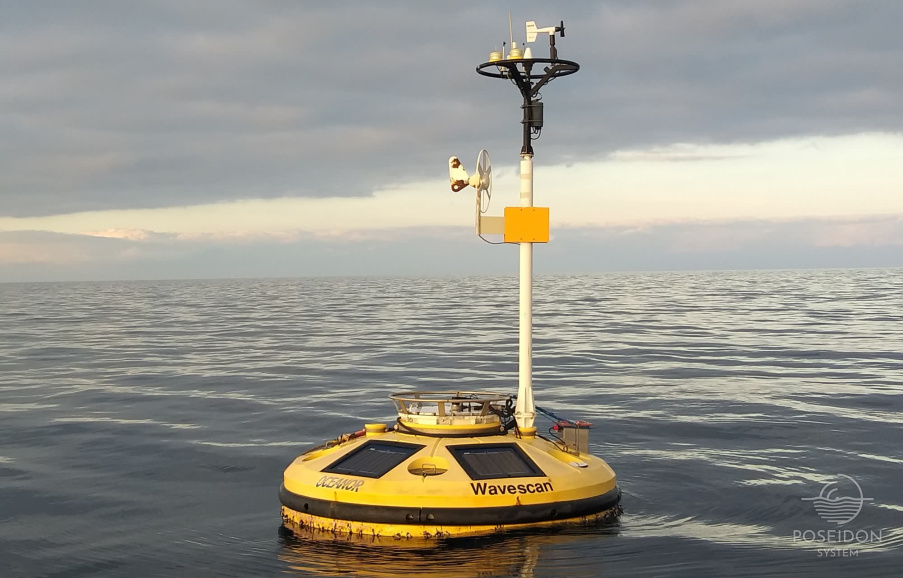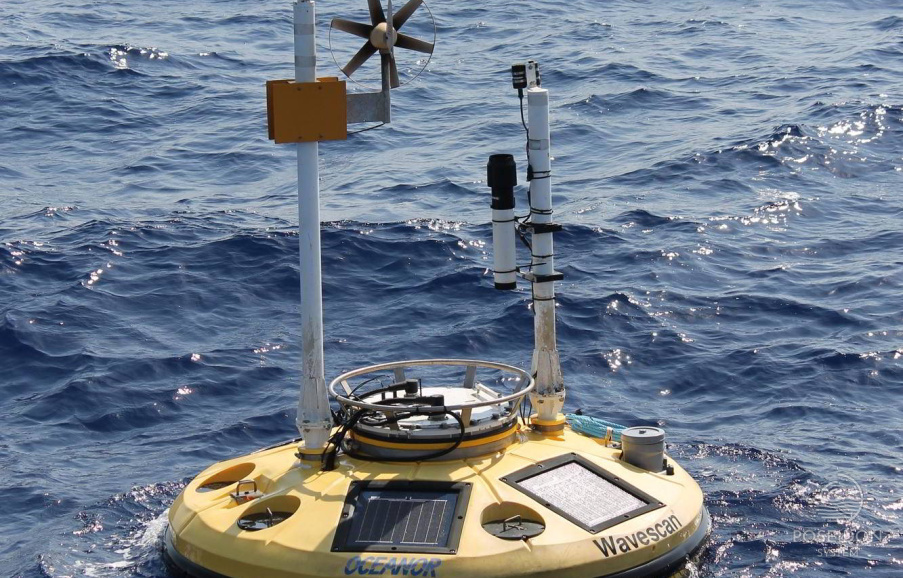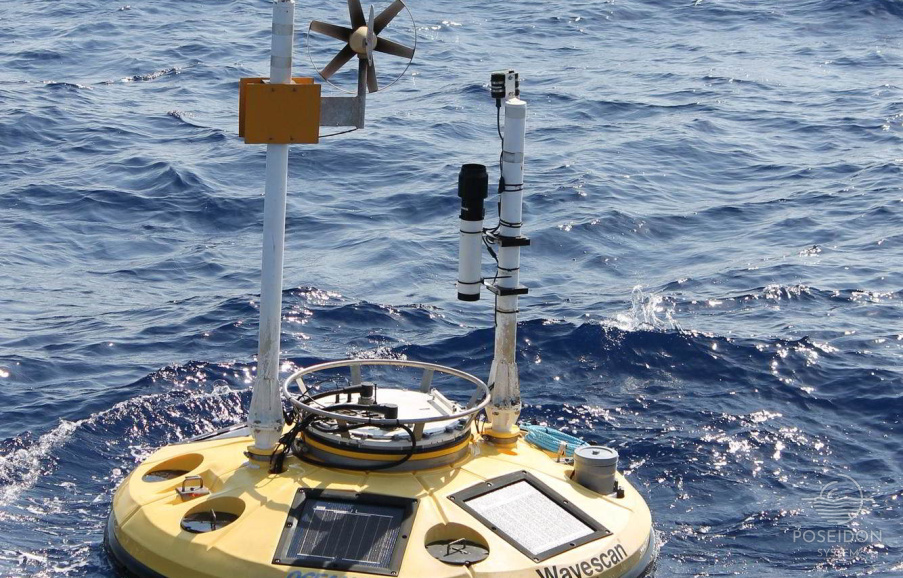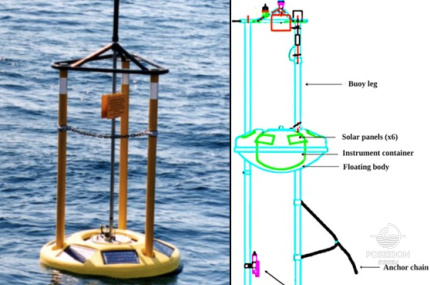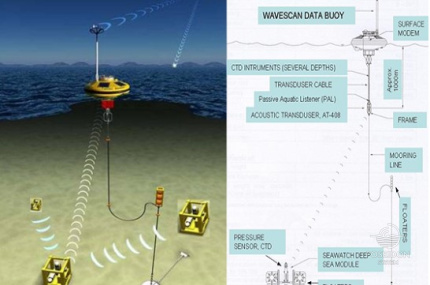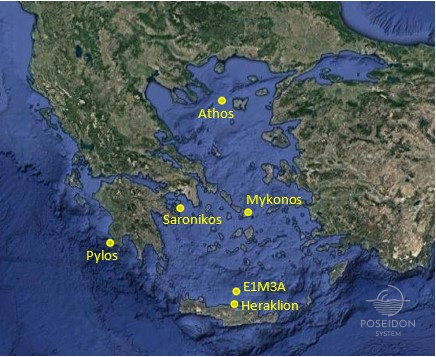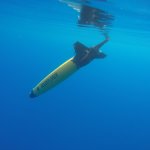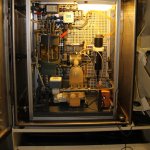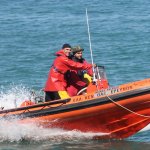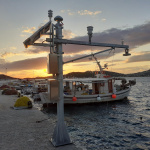Fixed Mooring Buoys
Moored buoys are anchored at fixed locations and regularly collect observations from many different atmospheric and oceanographic sensors. The long term recordings collected by the fixed stations can provide evidence on the ocean state and ocean variability, allow a better understanding on the several processes that take place in the marine environment, support the calibration and the verification of the marine and weather forecasting systems but also to enhance the maritime safety and the efficient planning of marine infrastructures.
The Poseidon system operates a network of fixed measuring floats, which are moored at various locations in the Aegean and Ionian seas and consist of Seawatch platforms (Figure 1a) designed for deployments in marine areas shallower than 300m and the Wavescan platforms (Figure 1b) which can host multiparameter observatories and are designed for deep basins. The latter platform types can incorporate an inductive coupling mooring cable so that the instruments can support the data transfer through these cables in order to be available in real time even at depths greater than 1000m. Both types of floats are manufactured in Norway by Fugro Oceanor. The data, after being sent by the stations, are collected at POSEIDON operational center where they are automatically processed, quality controlled, stored to the system’s database and then released to the European Marine Databanks (CMEMS, EMODnet).
The buoys consist of 5 parts which are presented below:
[gbb name="buoys_five_components"]There are currently six fixed floating moorings - buoys in Greece (Figure 2). The locations of the selected stations represent marine basins with different characteristics but also with clear interaction.
[gbb name="Six_Buoy_stations"]
The oceanographic buoys constitute the backbone of the POSEIDON system and they are linked to the Mediterranean fixed stations network through the continuous contribution of the physical and biochemical recordings that take place in the Greek Seas.



